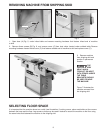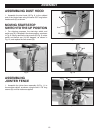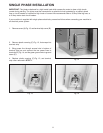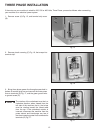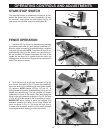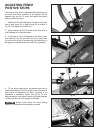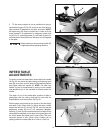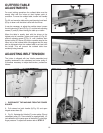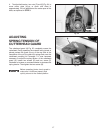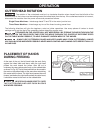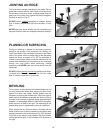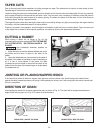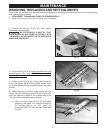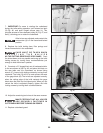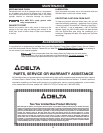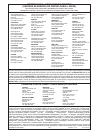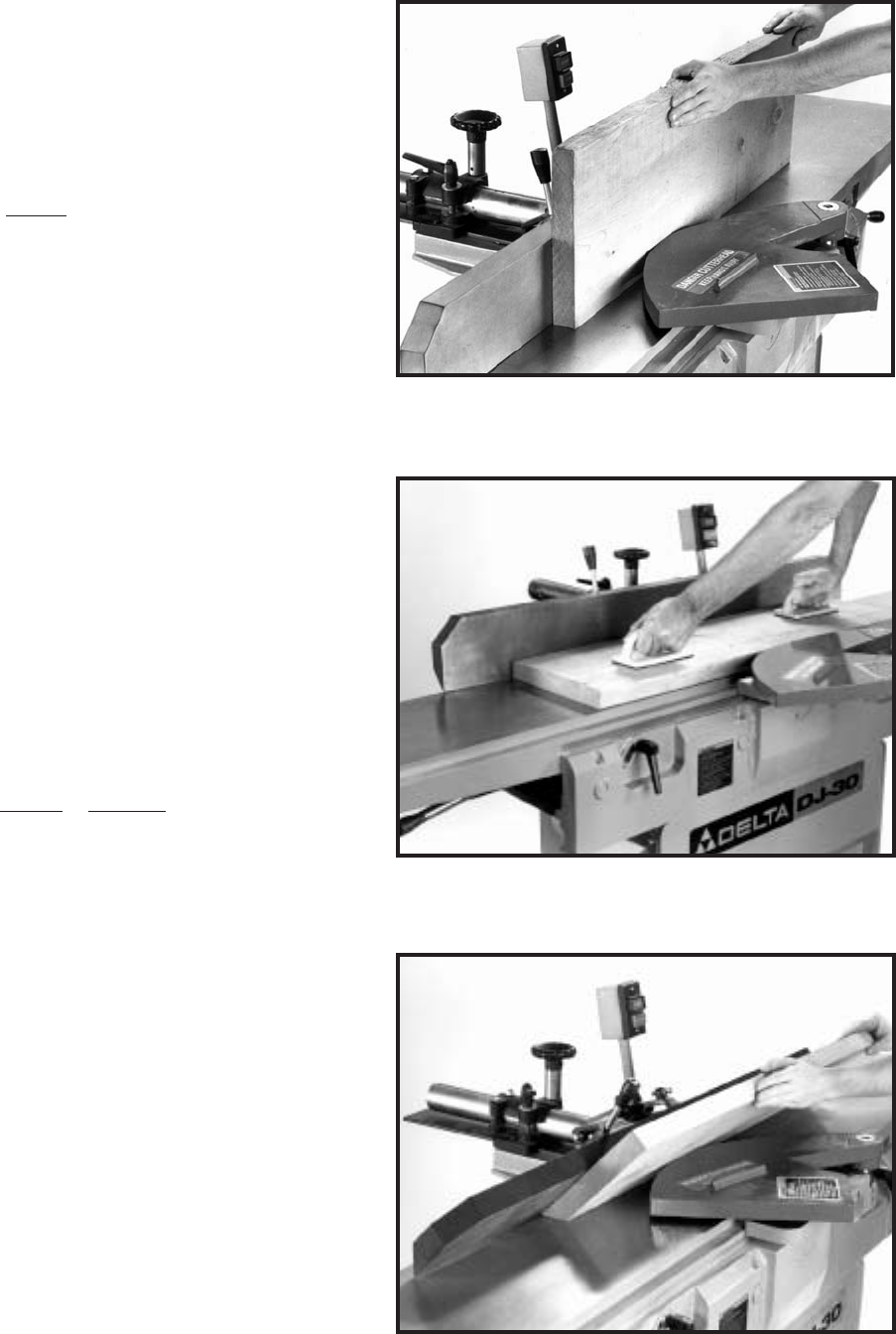
19
Fig. 37
Fig. 38
Fig. 39
JOINTING AN EDGE
This is the most common operation for the jointer. Set the
guide fence square with the table. Depth of cut should be
the minimum required to obtain a straight edge. Hold the
best face of the piece firmly against the fence throughout
the feed as shown in Fig. 37.
DO NOT perform jointing operations on material shorter
than 10 inches, narrower than 3/4 inch or less than 1/2 inch
thick.
NEVER pass your hands directly over the cutterhead and
use push blocks to feed the workpiece whenever possible.
PLANING OR SURFACING
Planing or surfacing is identical to the jointing operation
except for the position of the workpiece. For planing, the
major flat surface of the workpiece is placed on the infeed
table of the jointer with the narrow edge of the workpiece
against the fence, as shown in Fig. 38. The workpiece is
moved from the infeed table, across the cutterhead to the
outfeed table establishing a flat surface on the workpiece.
Always use push blocks when performing planing
operations and NEVER pass your hands directly over the
cutterhead.
DO NOT perform planing
or surfacing operations on mater-
ial shorter than 10 inches, narrower than 3/4 inch, wider
than 12 inches or less than 1/2 inch thick.
BEVELING
To cut a bevel, lock the fence at the required angle and run
the work across the knives while keeping the work firmly
against the fence and tables. Several passes may be
necessary to arrive at the desired result. When the angle is
small, there is little difference whether the fence is tilted to
the right or left. However, at greater angles approaching 45
degrees, it is increasingly difficult to hold the work properly
when the fence is tilted to the right. The advantage of the
double-tilting fence is appreciated under such conditions.
When tilted to the left, the fence forms a V-shape with the
tables, and the work is easily pressed into the pocket while
passing it across the knives as shown in Fig. 39. If the bevel
is laid out on the piece in such direction that this involves
cutting against the grain, it will be better to tilt the fence to
the right.



